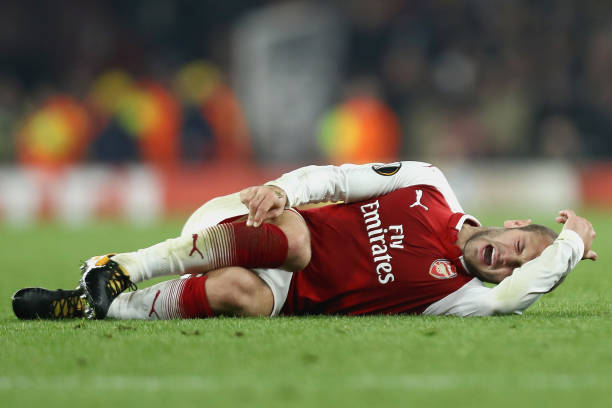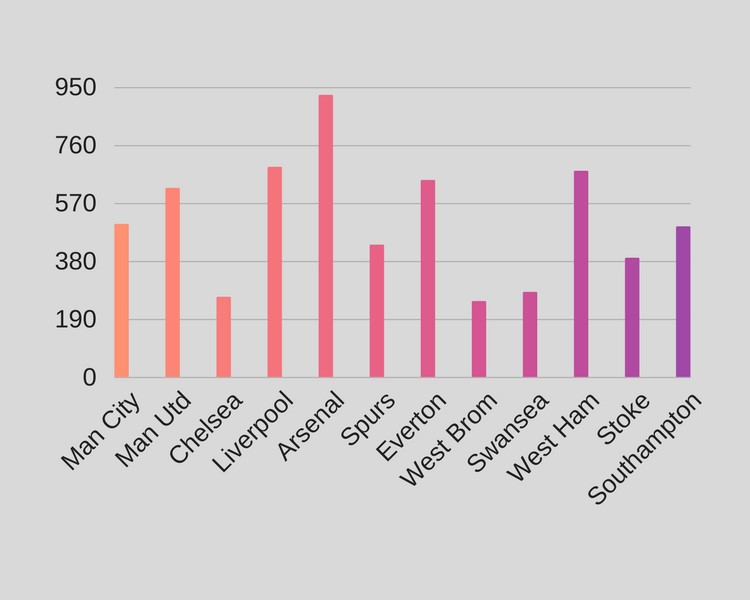Arsenal’s form on the pitch might be terrible at the moment but, believe it or not, off it, the club are doing pretty well.
No, I’m not talking about Arsenal’s ‘financial strength’, which we hear so much about, I’m talking about injuries.
This season, Arsene Wenger’s first team squad have appeared to suffer fewer injuries and been sidelined for shorter periods of time than before. This obviously isn’t including Mesut Ozil’s 900 ‘illnesses’ or the odd knock here and there.
The injuries the players do still suffer are mainly muscular injuries, as you would expect from footballers who play in a physical league that doesn’t have a winter break. It also still seems like a lot, especially now we’re getting towards the end of the season. However, apart from January, Arsenal have rarely had more than three players out at one time.
This isn’t something that’s happened overnight. Arsenal have been trying to deal with their injury problems since 2014 and, as you’ll see, they’ve steadily been succeeding.
On average over the last five seasons, according to Cute Injury, Arsenal have had 30 injuries per campaign.
Last season, Arsenal suffered 32 injuries. The season before that, 26, and during the 2014/15 campaign it was a whopping 35.
It’s important to note here that while last season’s injury tally seems high, you’ll notice later that the injured players were sidelined for shorter amounts of time. Basically, Arsenal’s ability to deal with injuries has improved.
2014/2015 seems to be the season that forced Arsenal to really take stock of their injury woes. There was no running away from the fact that they were occurring so often and in a higher quantity than their fellow Premier League sides’.
As you can see from this graphic, courtesy of Cute Injury, Arsenal are by far the most injured team over the past five years.
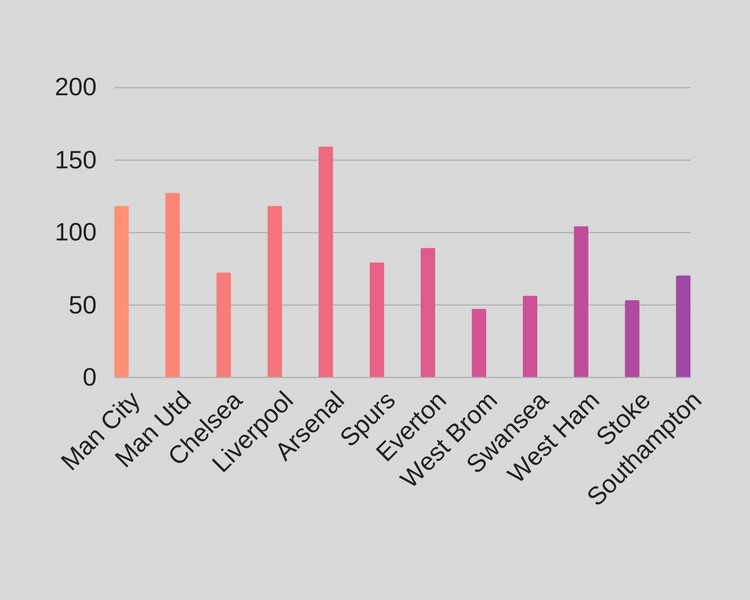
In 2014/15, Arsenal finished fifth in the Injury League table. This means they had the fifth most players out for the fifth highest amount of time. The season before that, they topped it and they finished third the campaign before that.
They’ve usually been in the top handful of teams and the clubs that finish above them don’t tend to be regulars. For example, Manchester United topped the table in 2011/12 but were seventh the previous year.
Arsenal, meanwhile, have consistently struggled with injuries. In March 2017, the Mirror even reported that Arsenal have been the most injured club in Premier League history. This suggests that Arsene Wenger wasn’t the problem, as he didn’t arrive in north London for four years after the Premier League became the Premier League. Although his method of training almost certainly hasn’t helped.
During the 11 seasons researched by Ben Dinnery, the country’s leading data injury analyst, for the Telegraph in December 2014 (2003/4-2013/14), Arsenal had suffered 312 significant injuries that kept players sidelined for 10 days or more. To put this into perspective, that’s 100 more than Chelsea.
During the decade since (2004-2014), Arsenal players lost 13,161 days to injury. Only Newcastle lost more at 13,344.
During the last five seasons, Arsenal have consistently not only had the most players sidelined, they’ve also been injured for the longest amount of time.
In terms of time on the sidelines, although Arsenal had 32 players out last season – more than the season before – they were out for the least amount of time.
On average, Arsenal players missed 185 accumulative games each season because of injury. But, last season, as you can see from the graphic below, they spent less time out with their respective injuries.
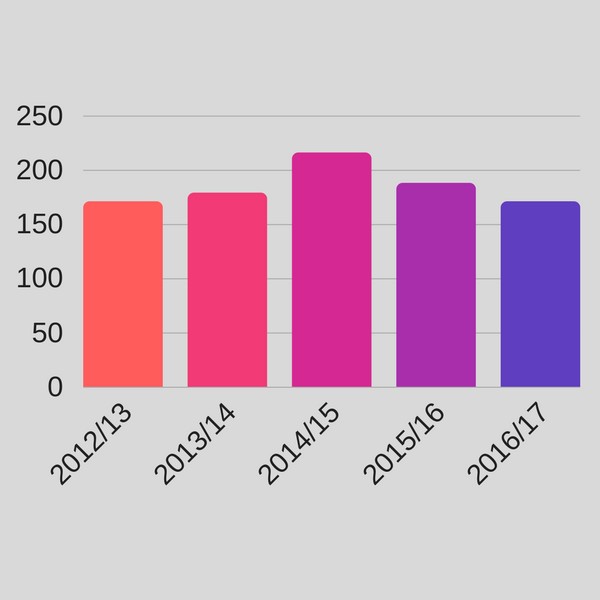
Next, we look at why this happened
Why were Arsenal’s injury problems so severe?
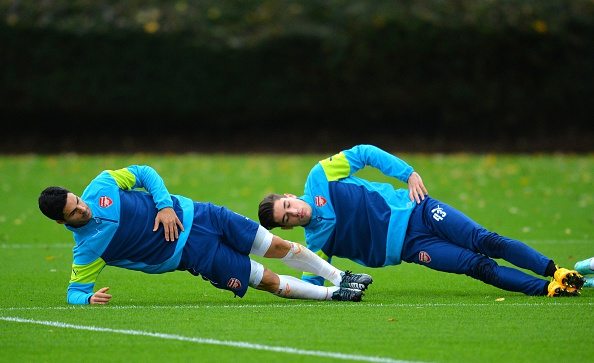
Several players have come out in the past and spoken about the intensity of Wenger’s training sessions, which he still takes to this day. Hector Bellerin, for example, said there was far more running and general fitness work when he moved to Arsenal from Barcelona.

“My first memory was going on to the training pitches for the first time, and realising nobody had brought any balls out,” Bellerin told Arsenal Magazine (p.14) at the end of last season.
“I was speaking to Jon Toral, because we both came over together from Barcelona, and I said, ‘I don’t think they are going to bring any balls out. What are we going to do?’
“Then we found out the morning session was just running – running around the pitch, side to side, and me and Jon were blowing.
“We were thinking, ‘What have we got ourselves into? This is not what we came here to do!’ But then in the afternoon we played some football.

“That was what struck us the most, though. When we were back in Barcelona everything was with the ball, even every single physical activity, it always involved the ball.
“So it was a bit different to us, but by the second session I was one of the last players in the runs anymore, I was one of the first, so you could see the improvement I made physically.”
What’s more, Arsenal have only recently added proper depth to their squad, which allows players rest during the more congested periods of the fixture calendar.
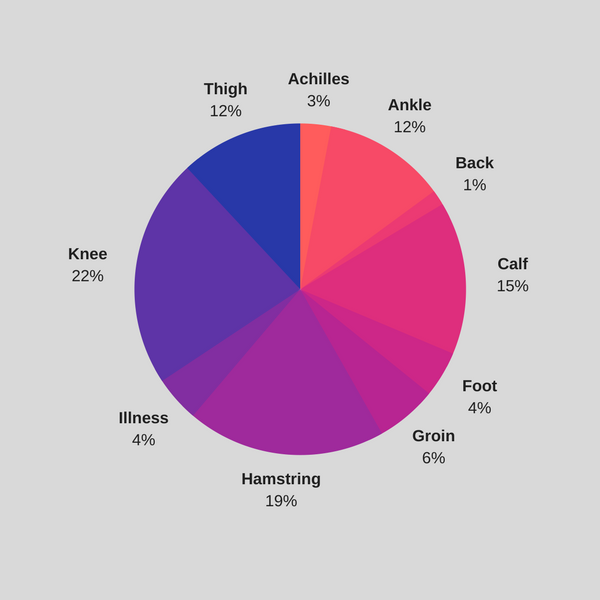
Before, key players were being run into the ground and, as most experts say, experiencing completely preventable soft tissue injuries.
These weren’t impact injuries from random collisions, which unfortunately do happen in football, they were the result over overworking muscle groups.
As you can see from Cute Injury’s graphic, a goalkeeper tends to suffer rib injuries – impact injuries from landing on the floor. Midfielders, however, tend to suffer hamstring, knee and calf problems from running more.
47% of Arsenal’s injuries come from their midfield – the players running the most.
Next, the solution
The solution
According to Ben Dinnery, this is why Arsenal looked into their methods in 2014 in order to stop this from happening.
Shad Forsythe, part of Germany’s backroom staff at the World Cup, came on board and, according to Wenger, there were “a lot of changes” since his arrival.
Wenger explained that the changes largely relate to preparation and the club have moved to more individually tailored programmes.
Daily Cannon’s physio expert Mark Fine agrees that Arsenal have probably been looking at implementing more thorough warm ups before matches and training sessions. Obviously, some players, such as Aaron Ramsey, who are more injury prone may need to warm up more than others.
In addition, Wenger has started rotating his squad far more. A completely different starting XI will step on the pitch against the likes of Ostersunds FK in the Europa League to the one against Manchester City at Wembley. Okay, they’re both just as terrible once they get on the pitch but that’s not the point of this piece.
Before, while Wenger would put out the youngsters in the League Cup, the same full-strength starting XI would get the nod in just about every match. Sometimes, they were having to play three times a week in cold conditions, which obviously isn’t great for muscles. Especially if warming up thoroughly wasn’t a priority. Now, these two methods have obviously been put in place so while Arsenal do still suffer form injuries, they’ve definitely improved.
Not only are players injured less frequently, they’re not sidelined for as long. Now, a few weeks usually means a few weeks and not “see you next season”.
In July 2017, Arsenal then recruited Darren Burgess. The former AFL side Port Adelaide fitness guru joined over the summer and was appointed as arsenal’s new head of high performance.
Although Arsenal’s injury woes are gradually improving, last season they had more people sidelined than the year before, which is a problem when they’re obviously trying to do the opposite. Perhaps this is why the club finally brought in the big guns.
This means that he doesn’t just work with the players in the physio room, he looks at data in order to work out where the problems are coming from and, most importantly, how to prevent them.
Wenger is said to have ‘hand-picked’ Burgess and he has responsibility over medical, psychology and performance analysis as well as other areas.
I reached out to Burgess for this piece as I was interested in whether he could share some of this methods but, like most big fitness experts, he politely declined. Especially at this time of the year when the season hasn’t even finished. Not only is he trying to keep a “low profile”, he probably doesn’t have all the data on hand to reveal to me, even if he wanted to.
There’s no doubt that Burgess’ influence this season has improved what was already an effective work in progress. Although the season’s not over yet, other than Santi Cazorla, who’s been out since October 2016, Arsenal haven’t had any serious, long-term injuries this term.
After Wenger leaves, Burgess and the rest of Arsenal’s fitness team will no doubt continue to work on and improve the way they handle the squad as individuals.
As I previously mentioned, last season was worse in terms of injuries than the campaign is before. However, generally, over time, things do seem to be improving. At least from an outside perspective.
According to Cute Injury, while Arsenal had around 32 injuries last season, they were out for the least amount of time in the last five years. That’s got to be a step in the right direction.
